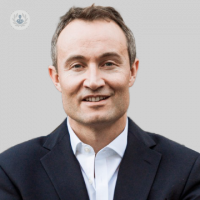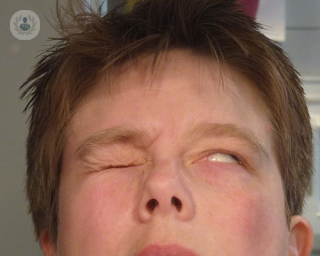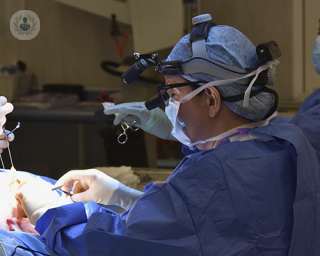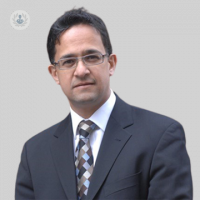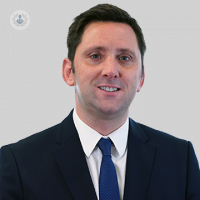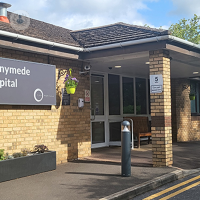Facial paralysis
Mr Richard Scawn - Ophthalmology
Created on: 11-13-2012
Updated on: 10-12-2023
Edited by: Aoife Maguire
What is facial paralysis?
Facial paralysis is a condition that causes partial or total motor paralysis of the facial nerve and, therefore, of the facial musculature.

What are the symptoms of facial paralysis?
The symptoms of facial paralysis include being unable to perform certain movements such as smiling, opening and closing the eye completely or raising the eyebrow.
What causes facial paralysis?
Facial paralysis can be caused by various factors, including tumours, trauma, acute and chronic ear infections and congenital disorders (Moebius syndrome). However, its causes are mostly unknown, and in this case it is known as Bell's palsy or peripheral facial paralysis.
How is facial paralysis treated?
Normally steroids are given to slow down the progressive deterioration of the nerve and massages are performed on the facial muscles. In the more severe cases, specific surgical treatments are also performed, using both static and dynamic techniques to restore the movement and functionality of the muscles.
Treatment for Bell's palsy, or peripheral facial paralysis, should be started immediately after onset for a faster and more effective recovery.
Are there any complications during recovery?
Recovery from facial paralysis is sometimes incomplete because the nerve is damaged and unable to function normally. Complications may occur, such as hemifacial spasm (where some of the muscles are permanently contracted) or synkinesis (when an involuntary movement occurs during a voluntary movement).
Fortunately, both complications can be improved through appropriate rehabilitative treatment, such as neuromuscular facial retraining exercises or, in some cases, infiltration with botulinum toxin. Facial paralysis can be treated by various medical specialists, including ENT specialists and maxillofacial surgeons.
